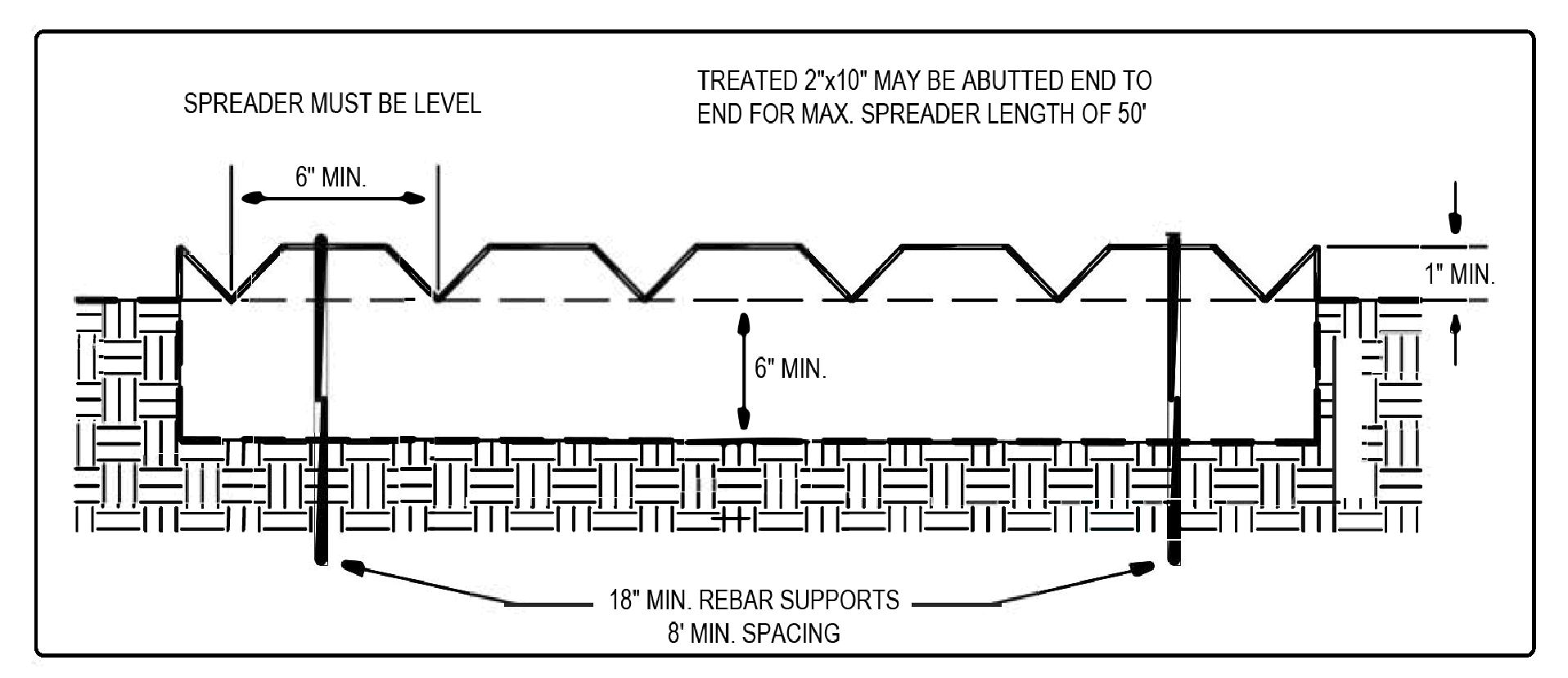1.31 BMP C206 - Level Spreader
To provide a temporary outlet for dikes and diversions consisting of an excavated depression constructed at zero grade across a slope. To convert concentrated runoff to sheet flow and release it onto stabilized areas.
Use when a concentrated flow of water needs to be dispersed over a large area with existing stable vegetation.
What is the risk of erosion or damage if the flow may become concentrated?
Is an easement required if discharged to adjoining property?
Use only where the slopes are gentle, the water volume is relatively low, and the soil will adsorb most of the low flow events.
1.31.3 Design and Installation Specifications
Use above undisturbed areas that are stabilized by existing vegetation.
Do not allow low points in the level spreader. If the level spreader has any low points, flow will concentrate, create channels and may cause erosion.
Discharge area below the outlet must be uniform with a slope of less than 20%.
Construct outlet level in a stable, undisturbed soil profile (not on fill).
Do not allow the runoff to reconcentrate after release unless intercepted by another downstream measure.
The grade of the channel for the last 20 feet of the dike or interceptor entering the level spreader shall be less than or equal to 1 percent. The grade of the level spreader shall be 0 percent to ensure uniform spreading of storm runoff.
A 6-inch high gravel berm placed across the level lip shall consist of washed crushed rock, 2- to 4-inch or 3/4-inch to 1½-inch size.
Calculate the spreader length by estimating the peak volumetric flowrate expected from a 10-year, 24-hour frequency storm assuming a type 1A rainfall distribution (3.0-inches) using a 10-minute timestep. The length of the spreader shall be a minimum of 15 feet for 0.1 cubic feet per second and shall be 10 feet for each 0.1 cubic feet per second there after to a maximum of 0.5 cubic feet per second per spreader. Use multiple spreaders for higher flows.
The width of the spreader should be at least 6 feet.
The depth of the spreader as measured from the lip should be at least 6 inches and it should be uniform across the entire length.
Level spreaders shall be setback a minimum of 5 feet from the property line unless there is an easement for flow.
Materials that can be used include sand bags, lumber, logs, concrete, and pipe. To function properly, the material needs to be installed level and on contour. Figure 3 - 13: Cross-Section of a Level Spreader and Figure 3 - 14: Detail of a Level Spreader provide a cross-section and a detail of a level spreader. A capped perforated pipe can also be used as a spreader.
The spreader should be inspected after every runoff event to ensure proper function.
The contractor should avoid the placement of any material on the structure and should prevent construction traffic from crossing over the structure.
If the spreader is damaged by construction traffic, immediately repair it.
Figure 3 - 13: Cross-Section of a Level Spreader
Figure 3 - 14: Detail of a Level Spreader

